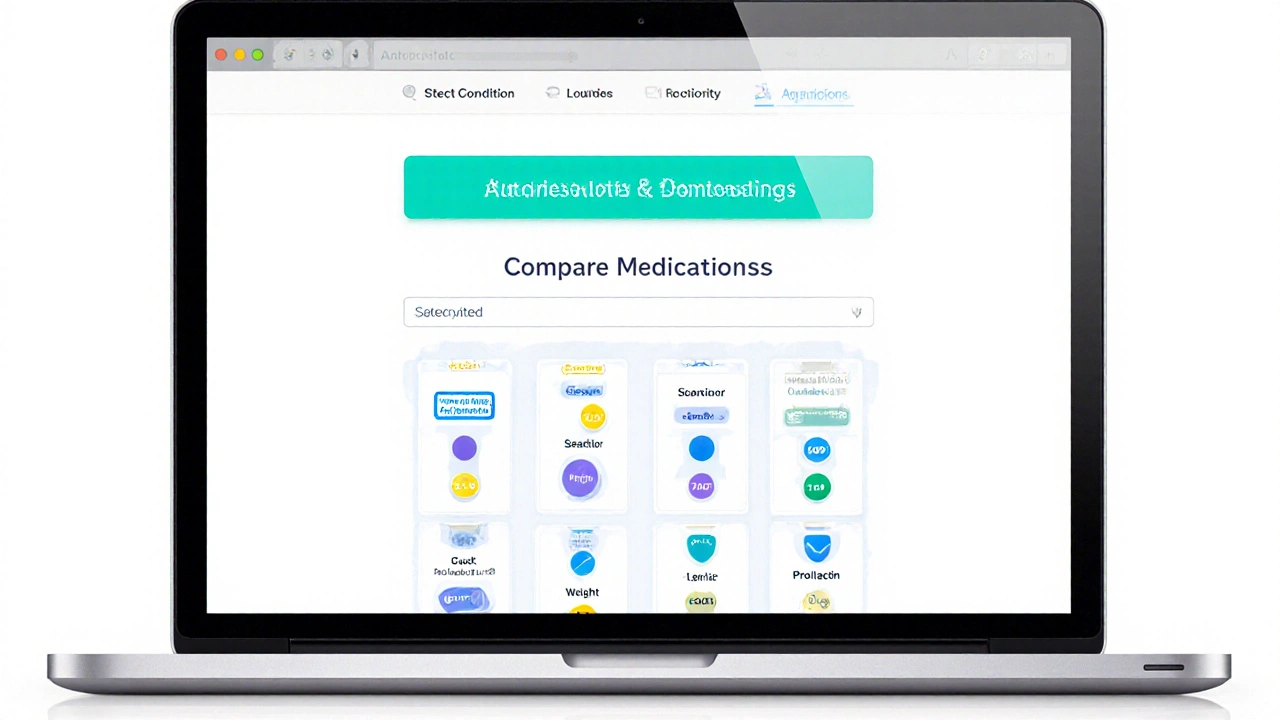
Seroquel (Quetiapine) vs Other Antipsychotics: A Practical Comparison
A detailed comparison of Seroquel (quetiapine) with major antipsychotic alternatives, covering efficacy, side effects, cost and tips for choosing the right medication.
When working with Seroquel, the brand name for quetiapine, an atypical antipsychotic used for schizophrenia, bipolar disorder, and major depressive episodes. Also known as quetiapine, it balances dopamine and serotonin activity to calm psychotic symptoms. you’ll also run into risperidone, a second‑generation antipsychotic that leans more on dopamine D2 blockade while still touching serotonin receptors. Both drugs aim to reduce hallucinations, delusions, and mood swings, but they do it with slightly different chemistry and dosing tricks.
Patients and clinicians weigh several factors: the specific diagnosis, how quickly the medication should kick in, side‑effect tolerance, and even cost. Schizophrenia, a chronic brain disorder characterized by distorted thinking, perception, and emotions often demands steady control of positive symptoms (like hallucinations) and negative symptoms (like flat affect). For many, Seroquel’s sedating effect helps with nighttime agitation, while risperidone’s stronger D2 binding may blunt positive symptoms more sharply.
When bipolar disorder is the main concern, the picture shifts. Bipolar disorder, a mood disorder with episodes of mania, depression, and mixed states can benefit from Seroquel’s ability to smooth out rapid mood swings, especially during depressive phases. Risperidone, on the other hand, is sometimes preferred for rapid‑cycle bipolar patients who need potent antimanic action without heavy sedation.
Both medications share a common side‑effect family: weight gain, metabolic changes, and dizziness. However, risperidone is more likely to cause extra‑pyramidal symptoms (muscle stiffness, tremor) because of its tighter grip on dopamine receptors. Seroquel tends to raise prolactin levels less often but can trigger more sleepiness and orthostatic drops in blood pressure.
Dosage routes also differ. Seroquel comes in immediate‑release and extended‑release tablets, giving flexibility for once‑daily or twice‑daily schedules. Risperidone is offered as tablets, orally disintegrating tablets, and a long‑acting injectable that can be a game‑changer for patients struggling with daily pill adherence.
Cost and insurance coverage often tip the scales. Generic quetiapine usually lands at a lower price point than generic risperidone, though regional formularies vary. For patients on a tight budget, the cheaper option may improve long‑term consistency, but effectiveness should never be sacrificed.
Ultimately, the decision hinges on the individual’s symptom profile, side‑effect sensitivity, and lifestyle. Many clinicians start with one drug, monitor response for a few weeks, then switch or add the other if needed. The goal is simple: keep psychotic symptoms in check while preserving as much quality of life as possible.
Below you’ll find a collection of articles that dig deeper into dosing tips, side‑effect management, and real‑world patient stories related to Seroquel vs risperidone. Use them to fine‑tune your treatment plan or to understand what to expect when you or a loved one begins therapy.

A detailed comparison of Seroquel (quetiapine) with major antipsychotic alternatives, covering efficacy, side effects, cost and tips for choosing the right medication.